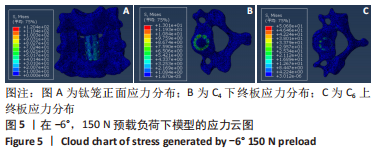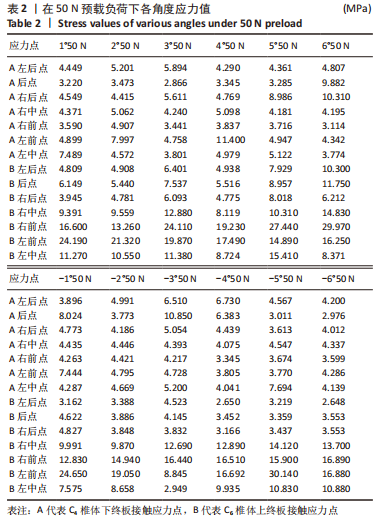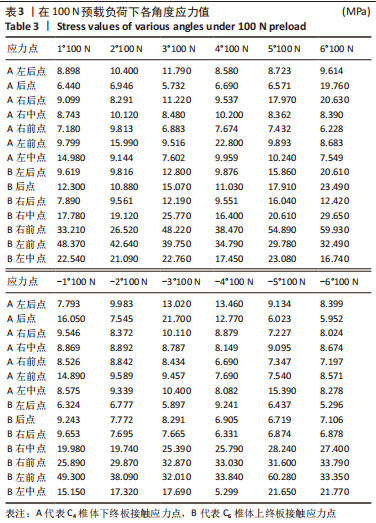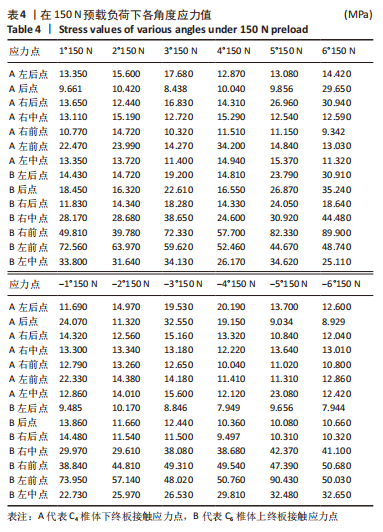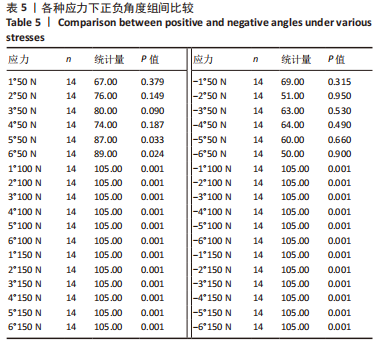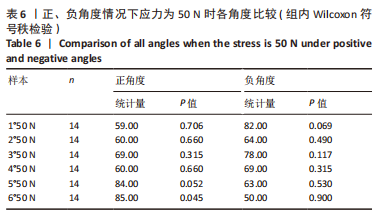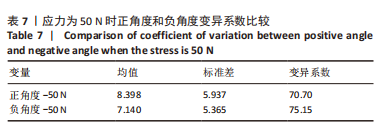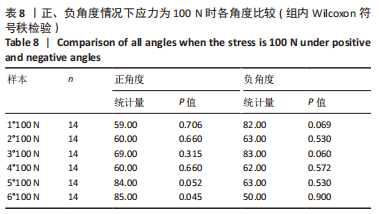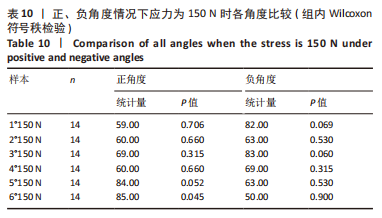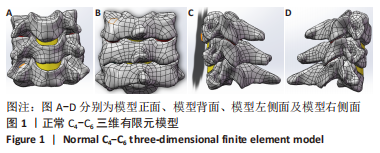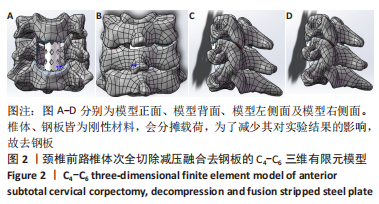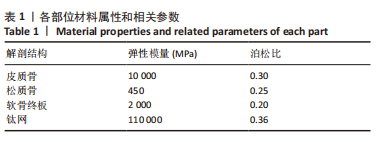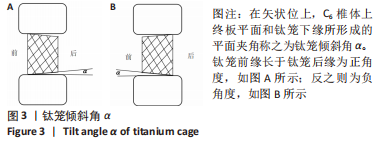中国组织工程研究 ›› 2024, Vol. 28 ›› Issue (9): 1313-1319.doi: 10.12307/2023.919
• 骨与关节生物力学 bone and joint biomechanics • 下一篇
颈椎前路椎体次全切除减压融合钛笼倾斜角度与术后钛笼下沉的有限元分析
李智斐1,杨 尹2,陈华龙3,梁钦秋2,钟远鸣1,张翼升1
- 1广西中医药大学第一附属医院,广西壮族自治区南宁市 530000;2广西中医药大学研究生学院,广西壮族自治区南宁市 530000;3玉林市中西医结合骨伤医院,广西壮族自治区玉林市 537000
Finite element analysis of the correlation between tilt angle of titanium cage and postoperative subsidence of titanium cage after anterior subtotal cervical corpectomy, decompression and fusion
Li Zhifei1, Yang Yin2, Chen Hualong3, Liang Qinqiu2, Zhong Yuanming1, Zhang Yisheng1
- 1First Affiliated Hospital of Guangxi University of Chinese Medicine, Nanning 530000, Guangxi Zhuang Autonomous Region, China; 2Graduate School of Guangxi University of Chinese Medicine, Nanning 530000, Guangxi Zhuang Autonomous Region, China; 3Yulin Bone Trauma Hospital, Yulin 537000, Guangxi Zhuang Autonomous Region, China
摘要:
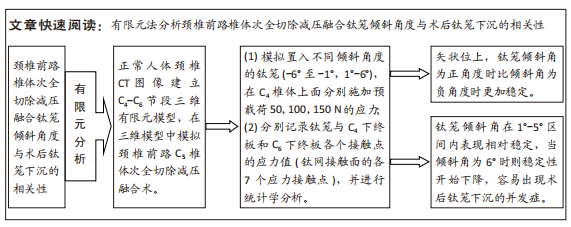
文题释义:
颈椎前路椎体次全切除减压:是指从颈椎前入路对椎体进行部分切除,从而达到脊髓减压的目的,在切除部位置入钛笼替代切除的椎体部位,并进行固定,称为颈椎前路椎体次全切除减压术。有限元分析:利用数学近似的方法对真实物理系统(几何和载荷工况)进行模拟,并利用简单而又相互作用的元素,即单元,就可以用有限数量的未知量去逼近无限未知量的真实系统。
背景:颈椎前路椎体次全切除减压融合是治疗颈椎退行性疾病的常规手段,钛笼是椎体次全切后维持颈椎稳定的重要植入物,近几年临床发现,术后很多患者出现钛笼下沉等并发症,其原因存在很大争议。
目的:探讨颈椎前路椎体次全切除减压融合钛笼倾斜角度与术后钛笼下沉的内在生物力学关系。方法:通过正常人体颈椎CT图像建立C4-C6节段三维有限元模型,在三维模型中模拟颈椎前路C5椎体次全切除减压融合,并模拟置入不同倾斜角度的钛笼(-6°至-1°称之为负角度,即钛笼前缘短于钛笼后缘为负角度;1°-6°称之为正角度,即钛笼前缘长于钛笼后缘为正角度)。在C4椎体上分别施加预载荷50,100和150 N的应力作用,记录钛笼与C4下终板和C6上终板各个接触点的应力值(钛网接触面的各7 个应力接触点),并进行统计学分析。
结果与结论:①钛笼倾斜角正角度组和负角度组分别在C4椎体施加50,100和150 N应力下产生的数据经Mann-Whitn检验发现,差异均有显著性意义(P < 0.05);钛笼倾斜角正角度组在50,100和150 N应力条件下,其离散系数均小于负角度组;②在C4椎体施加50,100和150 N应力条件下,钛笼倾斜角正角度组内Wilcoxon符号秩检验发现当角度设为1°-5°时,差异无显著性意义(P > 0.05);但当钛笼倾斜角设为6°时,差异有显著性意义(P < 0.05);③在C4椎体施加50,100和150 N应力条件下,钛笼倾斜角负角度组内Wilcoxon符号秩检验发现当倾斜角设为-1°至-6°时,差异无显著性意义(P > 0.05);④提示矢状位上,钛笼倾斜角为正角度时比倾斜角为负角度时更加稳定,更加适合临床使用;钛笼倾斜角在1°-5°区间内表现相对稳定,当倾斜角为6°时则稳定性开始下降,容易出现术后钛笼下沉的并发症,临床上根据术中情况更适合选用倾斜角度在1°-5°的钛笼,以提高疗效。
https://orcid.org/0000-0003-1984-1179 (李智斐)
中国组织工程研究杂志出版内容重点:人工关节;骨植入物;脊柱;骨折;内固定;数字化骨科;组织工程
中图分类号:
